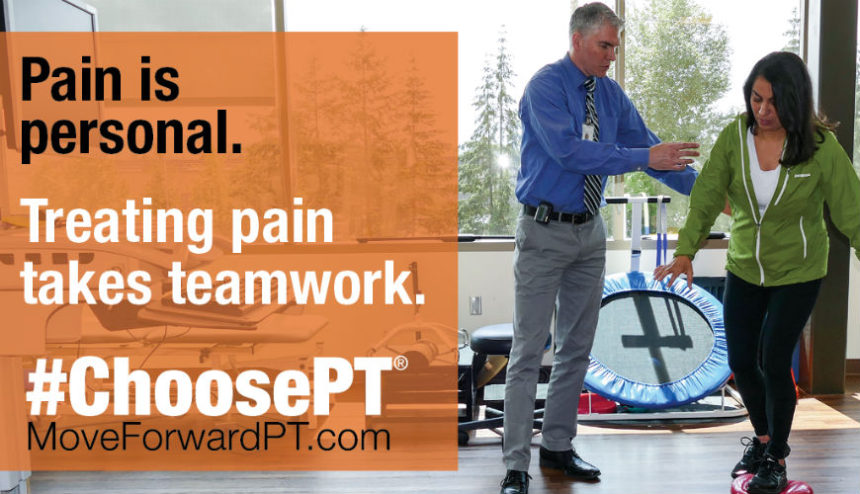 By MiKayla Christensen, PT, DPT, MTC, Physical Therapy
By MiKayla Christensen, PT, DPT, MTC, Physical Therapy
Doctor-prescribed opioids are appropriate in some cases, but they just mask the pain —and opioid risks include depression, overdose, and addiction, plus withdrawal symptoms when stopping use. The Centers for Disease Control (CDC) and Prevention recommend physical therapy as a safe and effective alternative to addictive opioids for long-term pain management. Whereas opioids only mask the sensation of pain, physical therapists are movement experts and can help diagnose and treat injuries while helping individuals identify strategies to better manage their pain. The earlier you seek care, the better the chances you have for not developing chronic symptoms.
The American Physical Therapy Association (APTA) uses the month of October to encourage others to learn about the multiple ways physical therapists can help manage pain without medication. If you missed it, here’s Part-One.
#ChoosePT campaign – Part-Two:
1. Psychological factors, such as depression and anxiety, can make your pain worse.
Pain can be influenced by many different factors, such as psychological conditions. A recent study in the Journal of Pain showed that psychological variables that existed prior to a total knee replacement were related to a patient’s experience of long-term pain following the operation.
2. Your social environment may influence your perception of pain.
Many patients state their pain increases when they are at work or in a stressful situation. Pain messages can be generated when an individual is in an environment or situation that the brain interprets as unsafe. It is a fundamental form of self-protection.
3. Understanding pain through education may reduce your need for care.
A large study conducted with military personnel demonstrated that those who were given a 45-minute educational session about pain sought care for low back pain less than their counterparts.
PT can Help
Physical therapists partner with patients, their families, and other health care professionals to manage pain, often reducing or eliminating the need for opioids. Research has shown that a simple education session with a physical therapist can lead to improved function, range of motion, and decreased pain.
Watch for the final post in the special three-part series next week.
Additional Resources:
MoveForwardPT.com. The Editorial Board is comprised of physical therapist members of the American Physical Therapy Association (APTA).


